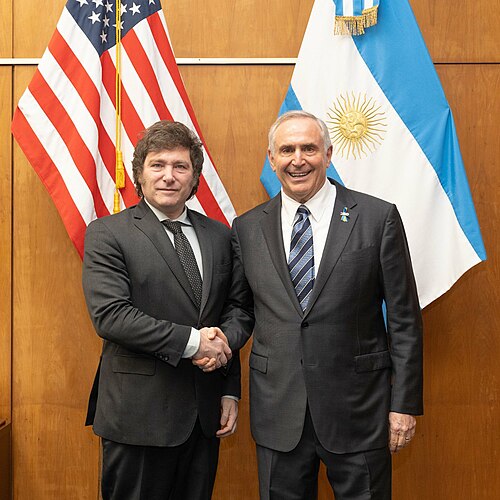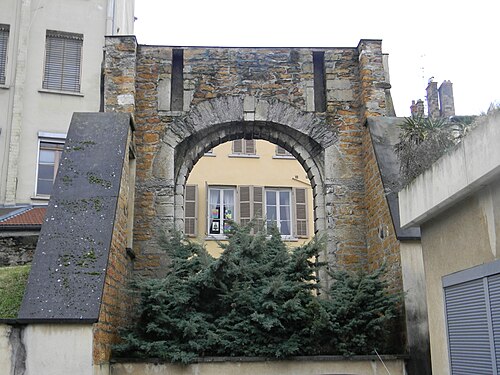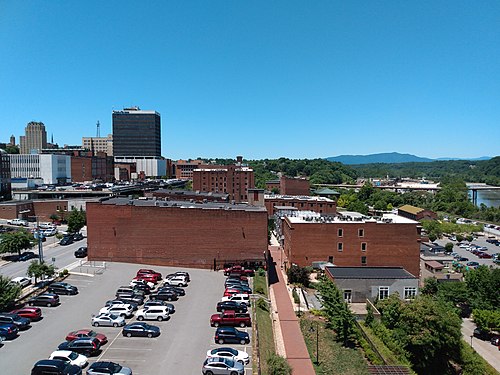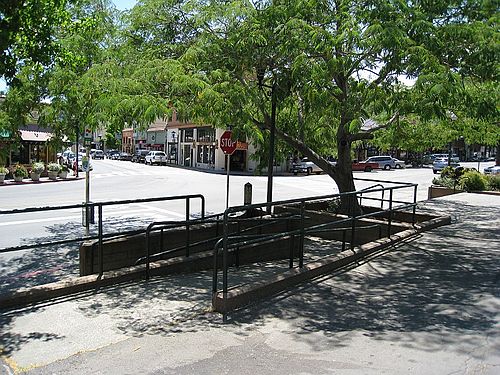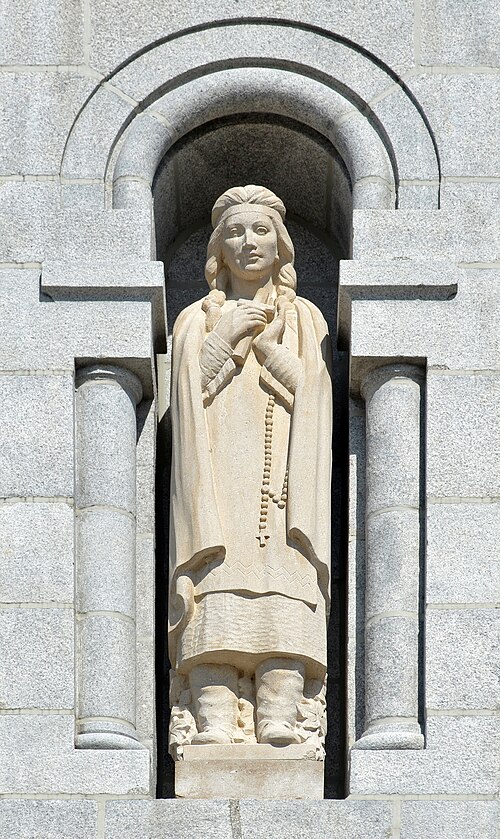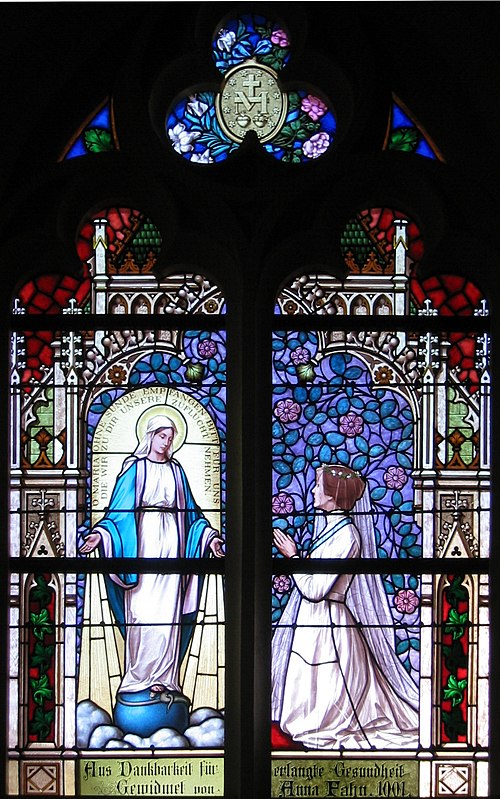
The Marian apparitions of the Rue du Bac are the three apparitions of the Virgin Mary declared by a nun, Sister Catherine Labouré, from July to December 1830. During these apparitions, the nun said she received the request to have a medal struck and distributed in honor of the Mother of Jesus. This medal, struck for the first time in 1832, was very successful, and it was distributed to several million copies in the world, in a few years: it is the miraculous medal. The nun remained hidden and anonymous, her identity and the apparitions she said she witnessed remained secret almost until the end of her life. Although the Marian apparitions have not been officially recognized by the Catholic Church, because no canonical trial has been opened on the subject, this event has been implicitly recognized by the authorities of the Church, through the canonical trial on the miraculous medal, the attribution of a religious feast for the miraculous medal, and the beatification and canonization of the visionary.
The context
France was affected by political unrest that led to the fall of Charles X during the Revolution of the Three Glorious Days, ten days after the first apparition. The liberal movements took power during this change of king. Thus, Charles X who had succeeded Louis XVIII in 1824, was ousted in turn by Louis-Philippe I, six years later. This political turmoil affected all of Europe, and in the following months, revolutions hit Belgium and Poland. A cholera epidemic broke out in Russia at the same time and spread throughout Europe to reach Paris in the spring of 1832 where it killed 20,000 people. In this very agitated political context, a young girl from the countryside, Catherine Labouré, entered the Daughters of Charity, in January 1830, and she was sent in April of the same year, to the convent located on Rue du Bac in Paris, to do her novitiate. This apparition (or this cycle of three apparitions) will open a period of about a century where about fifteen apparitions, until 1933, will be recognized more or less officially by the Catholic Church. Among these apparitions, five took place in France (this one in Paris in 1830, La Salette in 1846, Lourdes in 1858, Pontmain in 1871, Pellevoisin in 1876).
The second apparition
On November 27, 1830, the Blessed Virgin appeared again to Catherine in the chapel. This time, it was at 5:30 p.m., during the novices’ prayer, under the picture of Saint Joseph (current location of the Virgin with the globe). First Catherine saw two living pictures that passed, in cross-fade, and in which the Blessed Virgin stood on the half-globe, her feet crushing the serpent. In the first picture, the Virgin holds in her hands a small golden globe topped with a cross that she raises to heaven. Catherine heard: “This ball represents the whole world, France and each person in particular” In the second picture, rays of a dazzling brightness come out of her open hands, whose fingers wear rings of precious stones. Catherine heard at the same time a voice that said: “These rays are the symbol of the graces that I pour out on the people who ask me for them”. Then an oval formed around the apparition and Catherine saw inscribed in a semicircle this invocation in letters of gold: “O Mary conceived without sin, pray for us who have recourse to you”. Then a voice was heard: “Have a medal struck on this model. Those who wear it with confidence will receive great graces”. Finally the picture turned over and Catherine saw the back of the medal: at the top a cross surmounts the initial of Mary, at the bottom two hearts, one crowned with thorns, the other pierced by a sword.
The cult and the medal
Sister Catherine reported the apparitions to her confessor, Father Aladel, who was initially skeptical. He consulted the Archbishop of Paris, Hyacinthe-Louis de Quélen, who authorized the striking of the medal in June 1832. The first medals were distributed on July 19, 1832, and soon reports of miraculous healings and conversions multiplied. The medal became very popular and was called the “miraculous medal” by the faithful. The cult of the medal was officially approved by Pope Gregory XVI in 1836, and a feast was established on November 27, the anniversary of the second apparition. The chapel of the Rue du Bac became a place of pilgrimage, where the body of Saint Catherine Labouré, who died in 1876, is exposed. The medal is also worn by many Catholics around the world, who invoke the intercession of the Immaculate Conception. The medal also inspired other Marian devotions, such as the Miraculous Medal Association, founded in 1909, and the Green Scapular, revealed to Sister Justine Bisqueyburu in 1840.
FERNANDES Gilbert, CC BY-SA 3.0 at, https://fr.wikipedia.org/wiki/Notre-Dame_de_la_M%C3%A9daille_miraculeuse#/media/Fichier:Ma%C3%9Fwerkfenster_Pfarrkirche_Sitzendorf_an_der_Schmida.jpg


